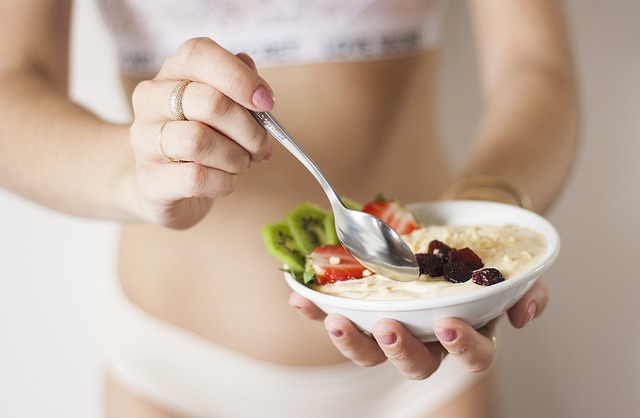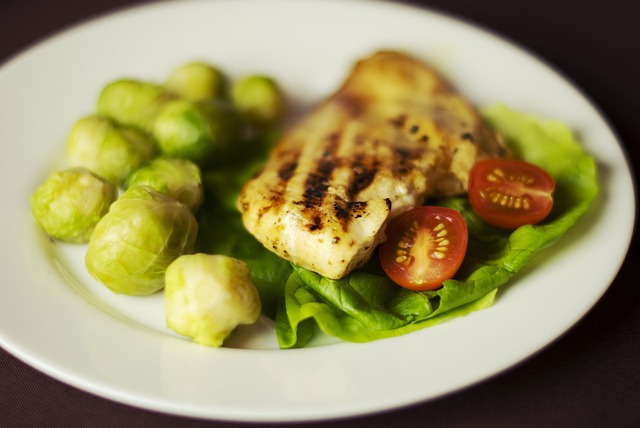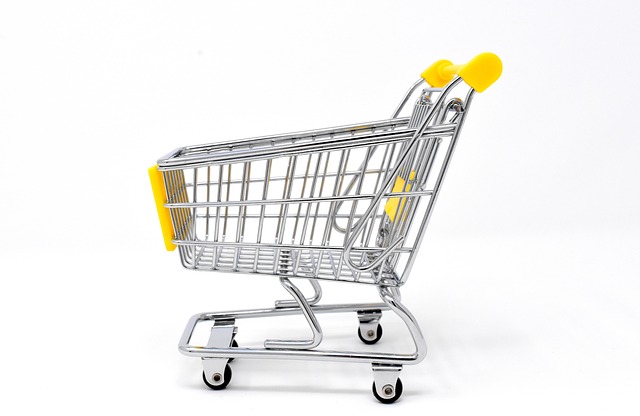The Abs Diet is a six-week exercise and diet plan that promises a flatter and stronger midsection. Stronger, flatter abdominals, according to the diet’s founder, David Zinczenko, a former Men’s Health editorial director, can help you live longer, sleep better, prevent back discomfort, and even improve your sex life.
You must eat six times a day and base your food selections on certain nutrient-dense “power foods.” You may depart from the diet one day each week. A 20-minute fitness regimen should be completed at least three times per week, according to the plan.
Diet Plan for 7 Days
The Abs Diet recommends six meals per day, three compact meals, and three snacks. Changing up your meals will provide you with variety and satisfaction, allowing you to eat every two hours throughout the day. This is just one example of how to make a food plan on the Abs Diet.
Day 1:
Low-fat yogurt for breakfast; protein smoothie for a snack; guacamole tuna salad with crackers for lunch; toast with nut butter for a snack; baked salmon with asparagus for dinner; peanut butter with low-fat ice cream for dessert (snack)
Day 2:
Whole-grain cereal with milk for breakfast; half grapefruit for a snack; open-faced turkey breast and cheese sandwich for lunch; banana smoothie for a snack; turkey meatballs with zucchini noodles for dinner; chocolate milk (snack)
Day 3:
Eggs with turkey slices for breakfast; trail mix nuts for a snack; grilled chicken salad for lunch; strawberry and protein smoothie for a snack; loaded sweet potato for dinner; one serving of almonds (snack)
Day 4:
Low-fat cottage cheese for breakfast; fruit and peanut butter smoothie for a snack; Mediterranean quinoa salad for lunch; hummus with veggies for a snack; chicken breast with sautéed greens for supper; peanut butter with apple slices (snack)
Day 5:
Whole-grain toast with peanut butter for breakfast; berries with almonds for a snack; chickpea salad with tomatoes and onion for lunch; string cheese for a snack; turkey and bean chili for dinner; low-fat ice cream for dessert (snack)
Day 6:
Breakfast: egg sandwich with ham; snack: veggies and guacamole; lunch: leftover turkey and bean chili; snack: deli slices with an apple; dinner: steamed broccoli with fish; dark chocolate (snack)
Day 7:
High-fiber cereal for breakfast; hard-boiled egg for a snack; black bean and low-fat cheese wrap for lunch; steamed edamame for a snack; chicken with a bowl of brown rice, spinach, bell peppers, and eggplant for dinner; dark chocolate-covered strawberries for dessert (snack)
What You Can Consume
The Abs Diet is marketed as an easy-to-follow regimen because few foods are limited, there is no calorie counting, and you frequently eat throughout the day. There is also no tight carbohydrate limit.
Whole vegetables and fruits, lean protein sources, whole grains, healthy fats, and whey protein are all encouraged in the six-week regimen. Smoothies are also an important part of the diet and can serve as a meal or a snack.
The book gives readers advice on beverages and advises them to avoid alcohol. Fat-free or low-fat, green tea and diet cola are all recommended beverages (in moderation). Zinczenko also suggests drinking eight glasses of water per day.
“Super Foods”
You must include at least two “power items” in each meal and snack that you consume as part of the program. There are a total of 12 foods on the list, and readers are encouraged to memorize the names since they correspond to the book’s concept:
- Almonds with other types of nuts
- Lentils with beans
- Spinach and other leafy greens
- Dairy (fat-free or low-fat milk, yogurt, cheese)
- Oatmeal in a flash (unsweetened, unflavored)
- Eggs
- Turkey and other lean cuts of meat
- The peanut butter
- Extra virgin olive oil
- Bread and cereals made from whole grains
- Whey protein isolate powder
- Berries, including raspberries
“Hack Meals”
Individuals who follow this diet are urged to have a “cheat meal” once a week. There are no restrictions, portion control rules, or foods that are promoted or discouraged nowadays. Just eat the foods you’ve been missing or yearning for.
The best method to regulate your urges is to fulfill them every now and again.
Smoothies
Smoothies should be built around the 12 power foods, which include protein powder, berries, yogurt, peanut butter, and other ingredients. The size of the smoothie should not be larger than eight ounces in size.
This diet is against eating processed microwaveable prepped meals, fatty meat, refined grains, sweetened cereals, and other items high in trans fats or high fructose corn syrup. You are also advised to avoid processed sugary snacks such as cookies and candies.
Alcohol
We recommend followers avoid alcohol during the six-week diet due to the high-calorie content of alcoholic beverages. We feel that when alcohol is drunk, people prefer to eat more.
Strategies for Preparing the Abs Diet
Despite the lack of limits, there are a few rules to follow, such as portion control, which is highly recommended.
According to experts, males frequently consume up to twice as much food as they think they are, particularly when it comes to grains, fats, and sweets. (Yet, according to a study released the same year as “The Abs Diet,” food memory in men is often accurate.)
To minimize overeating, dieters check portion sizes of all foods, especially those high in fat (such as peanut butter) or carbohydrates (such as rice, bread, and pasta). At each meal, the diet suggests no more than one or two servings of each food group. He also recommends that the complete contents of your meal fit on one dinner plate without being piled too high.
This approach also emphasizes the importance of making certain critical eating choices. You are advised to consume “energy-efficient foods.” In general, they are nutrient-dense foods, which give more vitamins, macronutrients, and minerals for fewer calories. Kidney beans, black beans, pinto beans, and other legumes, for example, provide fiber and Protein while being relatively low in calories when prepared without oil or other fats.
Time Recommendation
Another important aspect of the Abs Diet is eating frequency. It is recommended that followers consume six meals each day—three modest meals and three snacks. Eating three substantial meals per day causes an hourly energy imbalance, which is related to becoming overweight.
By eating periodically throughout the day, you are able to keep your energy input (what you consume) and energy output (exercise) in balance to maximize fat loss and muscle building.
Eating more frequently improves satiety and lowers the danger of binge eating. Satiety is a sensation of contentment and fullness that you may experience after eating, and increasing satiety is thought to help avoid extreme hunger, which can contribute to overeating.
The Abs Diet follows a strict schedule that alternates larger meals with smaller snacks. Snacks should be eaten two hours before lunch and dinner and two hours after supper, according to the book. You should anticipate eating every three hours over the course of a 12-hour day.
Modifications
Individuals with dietary restrictions should be able to complete the Abs Diet in its entirety. Vegetarians and vegans should be able to eat healthily on this regimen, though vegans may need to substitute pea protein powder or soy protein powder for whey protein powder in smoothies. For plant-based eaters will find plenty to fill their plates at mealtime because nutritious grains, legumes, fruits, and vegetables are recommended.
Individuals who follow a gluten-free diet will be able to participate in the program as well by substituting whole grains such as quinoa or buckwheat for gluten-containing grains.
Workout Suggestions
The Abs Diet relies heavily on a workout program. The program requires participants to exercise 20 minutes per session at least three times per week.
The exercise program is divided into three parts:
Three times per week, do the following.
Strength training: Each session is a total-body workout, with a particular emphasis on the legs. Strength workouts are arranged in a circuit manner, with little to no rest in between. The leg extension, military press, upright row, biceps curl, and bench press are all common exercises.
Exercises for the abdomen (two times per week): Traditional ab exercises include the bent-leg knee raise, abdominal crunch, and side bridge.
Cardiovascular exercise (should be done on non-strength-training days): The book offers activities such as cycling, running, or swimming, as well as some light cardiovascular activity (such as walking) on at least two of your three off days.
Resources
“The Abs Diet,” which was first released in 2004, is still available online and in many bookstores, along with the other books in the Abs Diet series. Recipes, eating patterns, example meal plans, and other tools are included.
As the foods allowed on the plan are extremely similar to foods advised on other diets, like the Mediterranean diet or DASH diet.
Shopping List Example
The Abs Diet avoids processed foods and added sugar while emphasizing nutrient-dense, natural foods. The shopping list below contains suggestions to help you get started on the six-week schedule. Please keep in mind that this is not an exhaustive shopping list, and you may prefer alternative foods.
- Greens with dark leaves (kale, spinach, bok choy, arugula, lettuce)
- Vegetables in vibrant colors (broccoli, eggplant, bell peppers, beets, tomatoes)
- Fruit (blueberries, blackberries, strawberries, grapefruit, cherries, pineapple)
- Fish and lean meat (chicken and turkey breast, lean ground beef, salmon, tuna)
- Complete grains (brown rice, quinoa, instant oatmeal)
- Legumes (black beans, pinto beans, chickpeas, lentils)
- Almonds, walnuts, cashews, chia seeds, and flaxseeds; peanut butter
- Dairy products with a low-fat content
- Avocados
- Extra virgin olive oil
- Eggs
- Whey protein isolate



